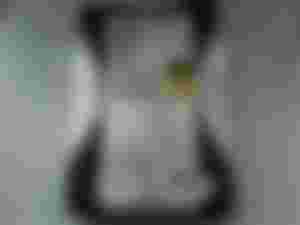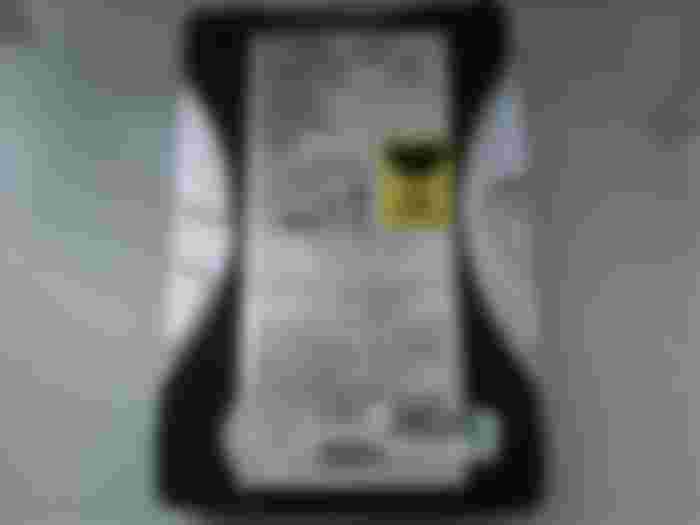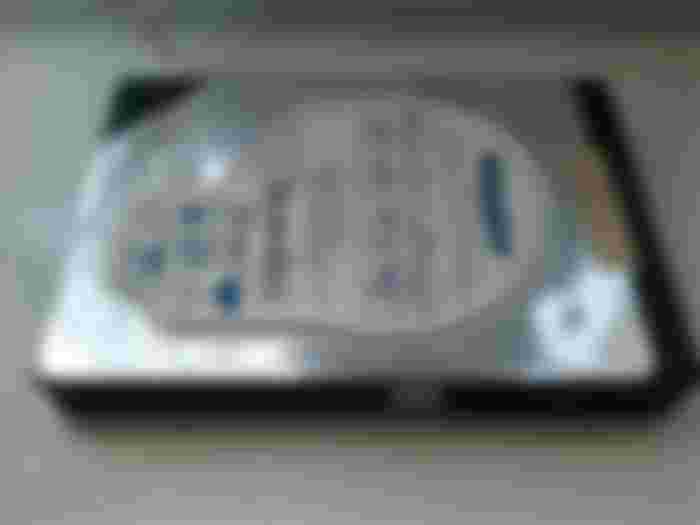The last IDE hard drives
IDE (or PATA, ATA) hard drives were the common standard for hard disks and optical drives, before the SATA standard arrived in the mid 2000s. In this article, i will showcase the last common specimen of IDE hard disks, share experiences with the longevity of these drives, and tell my personal experiences when using them. Its important to note, when SATA standard appeared on the market, IDE hard disks and optical drives continued to co-exist for years, before SATA overtook the market. Not all manufacturers and drives will be featured in this article, only the common ones, which i still have, and had personal experience with.
Why does it matter
IDE hard drives are history at this point, and there are not too much relevance in the modern world. There are two valid use-cases for these drives. If someone builds a retro computer, a Pentium2 or above, they are an obvious choice to be used (older PC-s might not detect hard drives above certain sizes, such as 2 GB or 10 GB). If someone decides to build a cheap home computer or secondary PC with Core2/Athlon2/Phenom2 based system, those still have an IDE port, and then these old IDE hard disks can be used, if large storage is not required (for example, if the computer is used to access the internet, and run a few simple programs, then sub 100 GB sizes are still plenty).
Limitations of the IDE standard
The IDE standard requires 40 pins. These cables are wide, and they restrict the airflow easily. One IDE port can have two disk drives hooked up to it, one must be jumpered as primary, and one as secondary device to work. The cables are flaky. IDE standard got renewed a few times. Initially, when it was released, it only supported a few MBytes/second transfer rates, which later got expanded in multiple steps, up to 133 MBytes/second. This is a theorical value, as it requires a special 80 pin cable (which were even more fragile than the standard ide cables), and using a standard IDE cable, the speed is usually capped at 33 MBytes/sec.
IDE speed chart
Do not let the transfer rates to confuse you, IDE hard disks usually cant do more than 40 MBytes/sec at most. In most situations, no proper cable will be used with the disk drive, limiting the speed to 33 MBytes/sec at all. Sometimes, PIO mode is being used as a fallback method, if some of the disk drives fails to initialize UDMA mode. Some disc drives will also use PIO mode instead of UDMA.
Digging out an IDE drive
IDE drives are almost two decades old at this point. Before starting to use one actively, ensure it works properly. According to my experience, letting them to spin for an hour or so before actually starting to utilize it agressively, will cure the bearings a bit, and help the drive to reach the intended RPM. Without this, the head can crash into the platter, damaging the drive. So power on the drives for an hour before you install an OS on them. Instead of using a quick format, use a full format, to test and flag all the faulty sectors. When the drive works well up to this point, then its good for use. Don't be surprised if you see one or two bad sectors - this is normal for these disks - but if you see multiple MBytes of bad area across the surface, the drive is not suitable.
Old IDE drives in the modern age
20 GB hard disks or above can be used to install modern operating systems, such as Linux. For Windows users, at least 40 GB is recommended, as only Windows 7 or older will fit on a 20 GB disk. The transfer rates of these disk drives are enough to boot and use modern operating systems from it, without any problems. Using some modern applications, however, can be problematic, as some of them are designed for faster drives to be loaded from. In overall, an IDE hard disk will not severly limit you from starting a browser or other basic programs, and shouldn't be too notable compared to a SATA hard disk.
Pantsu Seagate
The first hard drive series featured in this article, are the Seagate drives in panties. These hard disks have black rubber panties for absorption of vibrations. This is a very questionable feature, as the panty doesn't covers the screw holes, so the vibration can penetrate from the screw mounts.

Pantsu Seagate drives coming in various sizes starting from 6.3 GB (which is irrelevant for this article, as now only the larger drives are being discussed), up to 40 GB. Later on, the panties got removed with the arrival of the Barracuda brand. There are multiple generations, with multiple product code names, and multiple suitable sizes depending on the number of platters and heads (ST340823A, ST330621A, ST320413A, and so on). They pretty much the same, and acting the same way.

The Pantsu Seagate is a relatively silent drive, but thats all the adventages of the drive. Pantsu Seagate drives develop weak sectors eventually, and the write head cannot write reliably to the area after a few years. The very old pantsu seagate drives (below 10GB) like to develop click of death symptoms, the 10 GB and above drives usually start to slowly form slow and bad sectors, usually in the middle of the drive. The drive gets easily damages, if it accidentally slips from the power cable, and the head scratches the platter. Pantsu Seagates, after a few years of sudden bad sector development, usually die suddenly, when most of the sectors going bad on the surface. Pantsu seagates are not a recommended drive to be used these days. I haven't seen any which survived till this day, despite i threw out few of them. Even the one i took the pictures from, are dead now, just barely after less than 500 hours of total usage. The drive has a capacity reporting bug, which makes the Linux kernel to display some errors when booting from the drive. The drive also has bugs with some mobile racks, and it requires PIO 1 mode to be set, when used from a rack, otherwise, read errors will be displayed.
Hitachi (IBM) Deskstar
Some of IBM Deskstars (75xp) had bad reputation due to degradation of platters due to manufacturing defects (affected drives are usually were in Hungary and from the 75xp line), and caused IBM to sell its hard disk business to Hitachi (look up the famous Deathstar scandal for more informations).

The rest of the drives are however good, and they run well to this day. Deskstar drives have a lot of jumpers, more than the usual primary/sec/cable select/cap limit settings, and it can be quite tricky to set them up.

The drive can do about 30 MBytes/sec. I would not call it loud, but i would not call it silent either. Otherwise, the drive is fine. No slowdowns, no bad sectors, and typically no failures whatsoever.
Slim Maxtor
There are a lot of slim Maxtor hard drives available, but they are internally very different from each other. It can be generally said, the 20 GB and smaller models are reliable (usually branded as Fireball), the rest are not too reliable. Slim Maxtors - similarly to pantsu Seagates - are collectible, but unfortunately just as unreliable.

The 20 GB models tend to work fine, they might have one or two bad sectors, but the bad sectors don't randomly grow, and the drive works very well. The 30 GB models are less reliable. Actually, multiple 30GB slim Maxtor revisions and types exist - and all have the same type of error: eventually, unlimited numbers of bad sectors being formed accross all of the surface, in multiple MByte of size, and they tend to grow over time. Sometimes, the fault is being developed in the partition table, which means, you can't create a DOS-type partition table on it any more. The 40 GB slim disks have an even worse faith: click of death, the drive suddenly renames itself, and the data can not be accessed any more.

In overall, the 20 GB slim Maxtor can be a very good choice. It has no issues usually, and can run forever. Its small, quick, relatively silent, and reliable. The disk has a special feature - when its not being actively accessed, it can change its RPM to achieve a lower power consumption state (not all slim Maxtors have this feature). Due to its slom size, its easy to transfer and store the disk, as it takes only half the space. Its not recommended to put two slim Maxtors to a normal 3,5" bay, as they will overheat, which can kill the drives, unless you put a case fan next to them.
Maxtor (non slim)
The non slim Maxtors are more reliable hard drives. They mainly come in two sizes: the 40 GB and 80 GB version. I haven't seen any of these to die yet. Both are very reliable, however, there is a newer series which allowed the company to make 120 GB hard drives, and it uses visually a different design.

The 120 GB version usually develops bad sectors very quickly (100s of MBytes), then usually the head crashes to the platters, or the motor itself gets stuck, and the drive gets permanently damaged. Avoid the 120 GB version, i havent seen any surviving this year.

The drive is very fast, it can go with 30 MBytes/sec or even faster. However, the drive gets louder and louder every year. After a few years, the noise is quite unbearable, far louder than the noise of older Quantum drives even, becoming louder than the rest of the system combined. There is nothing can be done about it. Those who don't mind it, can use these drives, as they are very fast and reliable. Those who prefer the computer not to be louder than a portable vacuum cleaner, will have to choose a different hard disk.
Samsung
Samsung drives usually can be found in 80 GB size. These are the best drives so far. They have no known bugs. The drives are very silent, and they don't have bad or even slow sectors.

The Samsung 80 GB disks are probably the best choice for computer with IDE, and they can run for decades even under 24/7 type load. The drive is one of the fastest from the list.

Of course, compared to modern hard drives, its notably slower, but i even have modern Linux installed on them, which runs fine from them. Similar to this drive, 120GB and 160GB versions also exists. Never seen any of them.
In a future article, i will cover the 1GB-ish era hard disks.










As usual, nice article @Geri. I wanted to use my old IDE drives as backups. But honestely, with the time of transfer and the limited capacity, I don't even do it. They collect about 150cm^2 of dust each.